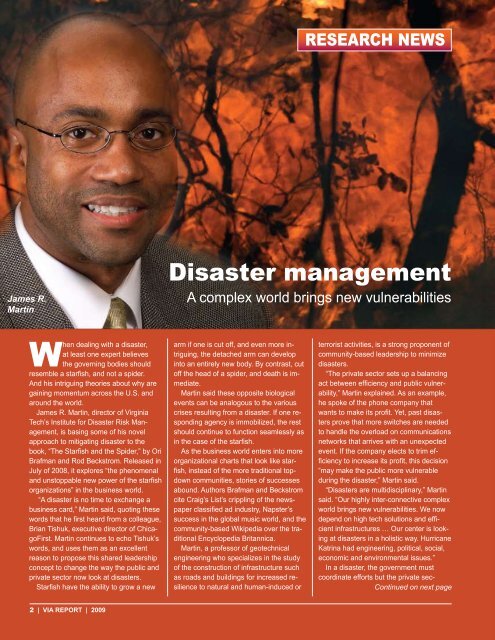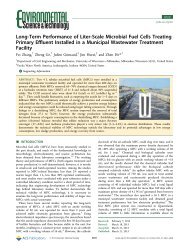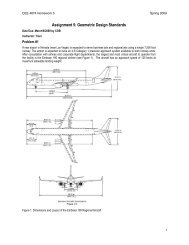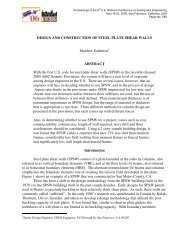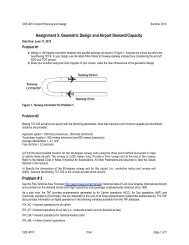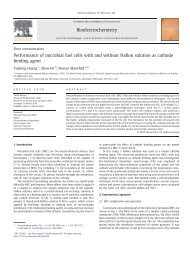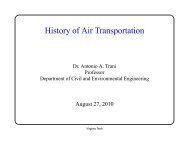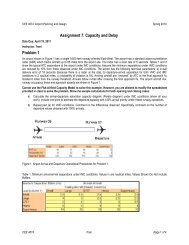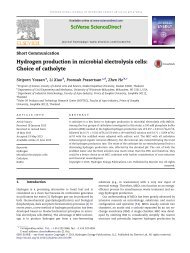Annual Report Year 2009 - Civil and Environmental Engineering
Annual Report Year 2009 - Civil and Environmental Engineering
Annual Report Year 2009 - Civil and Environmental Engineering
- No tags were found...
You also want an ePaper? Increase the reach of your titles
YUMPU automatically turns print PDFs into web optimized ePapers that Google loves.
RESEARCH NEWS<br />
James R.<br />
Martin<br />
Disaster management<br />
A complex world brings new vulnerabilities<br />
W<br />
hen dealing with a disaster,<br />
at least one expert believes<br />
the governing bodies should<br />
resemble a starfish, <strong>and</strong> not a spider.<br />
And his intriguing theories about why are<br />
gaining momentum across the U.S. <strong>and</strong><br />
around the world.<br />
James R. Martin, director of Virginia<br />
Tech’s Institute for Disaster Risk Management,<br />
is basing some of his novel<br />
approach to mitigating disaster to the<br />
book, “The Starfish <strong>and</strong> the Spider,” by Ori<br />
Brafman <strong>and</strong> Rod Beckstrom. Released in<br />
July of 2008, it explores “the phenomenal<br />
<strong>and</strong> unstoppable new power of the starfish<br />
organizations” in the business world.<br />
“A disaster is no time to exchange a<br />
business card,” Martin said, quoting these<br />
words that he first heard from a colleague,<br />
Brian Tishuk, executive director of ChicagoFirst.<br />
Martin continues to echo Tishuk’s<br />
words, <strong>and</strong> uses them as an excellent<br />
reason to propose this shared leadership<br />
concept to change the way the public <strong>and</strong><br />
private sector now look at disasters.<br />
Starfish have the ability to grow a new<br />
arm if one is cut off, <strong>and</strong> even more intriguing,<br />
the detached arm can develop<br />
into an entirely new body. By contrast, cut<br />
off the head of a spider, <strong>and</strong> death is immediate.<br />
Martin said these opposite biological<br />
events can be analogous to the various<br />
crises resulting from a disaster. If one responding<br />
agency is immobilized, the rest<br />
should continue to function seamlessly as<br />
in the case of the starfish.<br />
As the business world enters into more<br />
organizational charts that look like starfish,<br />
instead of the more traditional topdown<br />
communities, stories of successes<br />
abound. Authors Brafman <strong>and</strong> Beckstrom<br />
cite Craig’s List’s crippling of the newspaper<br />
classified ad industry, Napster’s<br />
success in the global music world, <strong>and</strong> the<br />
community-based Wikipedia over the traditional<br />
Encyclopedia Britannica.<br />
Martin, a professor of geotechnical<br />
engineering who specializes in the study<br />
of the construction of infrastructure such<br />
as roads <strong>and</strong> buildings for increased resilience<br />
to natural <strong>and</strong> human-induced or<br />
terrorist activities, is a strong proponent of<br />
community-based leadership to minimize<br />
disasters.<br />
“The private sector sets up a balancing<br />
act between efficiency <strong>and</strong> public vulnerability,”<br />
Martin explained. As an example,<br />
he spoke of the phone company that<br />
wants to make its profit. Yet, past disasters<br />
prove that more switches are needed<br />
to h<strong>and</strong>le the overload on communications<br />
networks that arrives with an unexpected<br />
event. If the company elects to trim efficiency<br />
to increase its profit, this decision<br />
“may make the public more vulnerable<br />
during the disaster,” Martin said.<br />
“Disasters are multidisciplinary,” Martin<br />
said. “Our highly inter-connective complex<br />
world brings new vulnerabilities. We now<br />
depend on high tech solutions <strong>and</strong> efficient<br />
infrastructures … Our center is looking<br />
at disasters in a holistic way. Hurricane<br />
Katrina had engineering, political, social,<br />
economic <strong>and</strong> environmental issues.”<br />
In a disaster, the government must<br />
coordinate efforts but the private sec-<br />
Continued on next page<br />
2 | VIA REPORT | <strong>2009</strong>


